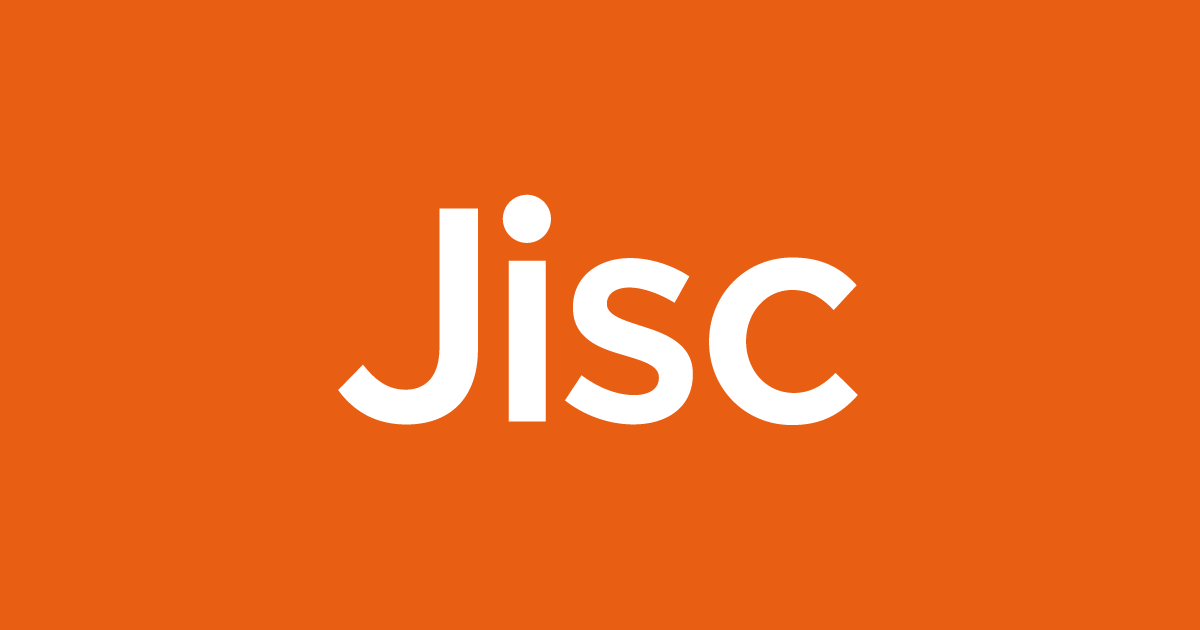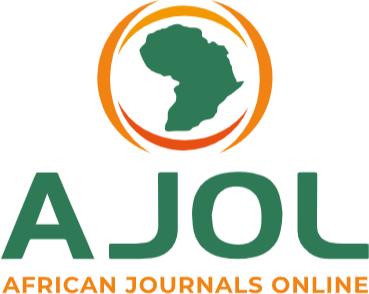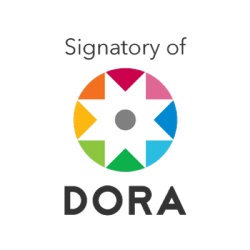The economic implications of covid-19 pandemic
التداعيات الاقتصادية للجائحة كوفيد 19
Abstract
The study aims to diagnose and expose the conditions and causes that led to the transmission of health shock to the economic sector; it also aims to itemize the sensitivity aspects of global economy to imbalances and the explanations of their spread during Covid-19 pandemic, by describing and analyzing the shock manifestations and investigating about possible and potential solutions.
The study concluded that untamed trading high-risk financial assets without rational coverage and expanding financial markets, in addition to immoral economic behavior, and the disturbed economic globalization, are the main factors of the global economy's fragility. It argued also, that adopting unconventional monetary and financial policies especially the principles of Islamic economy could curb the negative shock impact.
Downloads
References
A PIETTRE. (1952). Fondements, moyens et organes de la répartition du revenu national. Annales de 35 e Semaine sociale، 181-194.
Akerlof, G., & Shiller, R. (2016). Marchés de dupes : L’économie du mensonge et de la manipulation. Odile Jacob.
Aviles, A. L. (2017). Palladine Of Englande. (A. Munday, Trans.) Alicante : Universidad de Alicante.
Bajardi, P., Ramasco, J., Tizzoni, M., Colizza, V., & Vespignani, A. (2011). Human mobility networks, travel restrictions, and the global spread of 2009 H1N1 pandemic. PloS one, 6(1).
Bakar, N., & Barizah, N. (2007). A zakat accounting standard (ZAS) for Malaysian companies. (A. O. SCIENTISTS, Ed.) American Journal of Islamic Social Sciences, 24(4), 74.
Baldwin, R., & di Mauro, B. (2020). Economics in the Time of COVID-19. A VoxEU. org Book, Centre for Economic Policy Research, London. Accessed, 26, 15.
Bewley, T. (1980). The optimum quantity of money. Models of monetary economies, 169-210.
Blanchard, O., Akerlof, G., Romer, D., & Stiglitz, J. (2014). What have we learned?: Macroeconomic policy after the crisis. MIT Press.
Boulila, H., & Benbouziane, M. (2018). Austerity in Time of Crisis : A Solution or a Dangerous Idea? Evidence from Algeria. ETIKONOMI, 17(1), 11-24.
Caballero, R., Farhi, E., & Gourinchas, P.-O. (2008). Financial crash, commodity prices and global imbalances. National Bureau of Economic Research.
Castree, N., Chatterton, P., Heynen, N., Larner, W., & Wright, M. (2010). The Point is to Change it: Geographies of Hope and Survival in an Age of Crisis (Vol. 12). John Wiley & Sons.
Chapra, M. (1996). Qu'est-ce que l'economie islamique ? Banque Islamique de Developpement.
Chesnais, F. (2020). L’état de l’économie mondiale au début de la grande récession Covid-19 : repères historiques, analyses et illustrations. Alencontre.
Clifford Hugh Douglas، و Richard Orage. (1921). Credit-power and Democracy: With a Draft Scheme for the Mining Industry. Cecil Palmer.
Colizza, V., Barrat, A., Barthelemy, M., Valleron, A.-J., & Vespignani, A. (2007). Modeling the worldwide spread of pandemic influenza : baseline case and containment interventions. (P. L. Science, Ed.) PLoS medicine, 4(1).
Davis, E., & Karim, D. (2008). Comparing early warning systems for banking crises. (Elsevier, Ed.) Journal of Financial stability, 4(2), 89-120.
Demyanyk, Y., & Van Hemert, O. (2011). Understanding the subprime mortgage crisis. The review of financial studies, 24(6), 1848-1880.
Djennas, M., Benbouziane, M., & Djennas, M. (2015). Currency-banking crises and economic downturns: A comparison between Islamic and conventional banks. Financial Stability and Risk Management in Islamic Financial Institutions, 87.
Douglas, C. (1920). Economic democracy. Harcourt, Brace and Howe.
Duchin, R., Ozbas, O., & Sensoy, B. (2010). Costly external finance, corporate investment, and the subprime mortgage credit crisis. Journal of financial economics, 97(3), 418-435.
Faridi, F. (1983). Theory of Fiscal Policy in an Islamic State. Journal of King Abdulaziz University : Islamic Economics, 1(1).
Fassin, D. (2009). Les économies morales revisitées. Annales. Histoire, sciences sociales. 64, pp. 1235-1266. Cambridge University Press.
Gourinchas, P.-O. (2020). Flattening the pandemic and recession curves. Mitigating the COVID Economic Crisis : Act Fast and Do Whatever, 31.
Gourinchas, P.-O., & Jeanne, O. (2006). The elusive gains from international financial integration. (Wiley-Blackwell, Ed.) The Review of Economic Studies, 73(3), 715-741.
Gourinchas, P.-O., & Jeanne, O. (2013). Capital flows to developing countries : The allocation puzzle. (O. U. Press, Ed.) Review of Economic Studies, 80(4), 1484-1515.
Gourinchas, P.-O., & Rey, H. (2007). From world banker to world venture capitalist : US external adjustment and the exorbitant privilege. In G7 current account imbalances : sustainability and adjustment (pp. 11-66). University of Chicago Press.
Henry Farrell، و John Quiggin. (2017). Consensus, dissensus, and economic ideas : economic crisis and the rise and fall of Keynesianism. (Oxford University Press) International studies quarterly، 62(2). 269-283.
Hopkins, J. (2020, mars 25). theeconomist.com. Retrieved from https://www.economist.com/sites/default/files/20200328_ASC878.png
IMF. (2019, DECEMBRE). Retrieved from IMF.ORG.
IndexMundi. (2018, Novembre). Retrieved from IndexMundi.com.
Jacques pavoine. (1994). Les trois crises du xx ͨ siècle. Edition Ellipses.
Jacques Pavoine. (1994). Les trois crises du xx ͨ siècle. Paris : Edition Ellipses.
JP Olivier De Sardan. (1999). A moral economy of corruption in Africa ? The Journal of Modern African Studies، 37(1) .25-52.
Karl Marx، و Friederich Engels. (1973). Manifeste du parti communiste. Paris : Le livre de poche.
Kenway, J., & Fahey, J. (2010). Is greed still good ? Was it ever ? Exploring the emoscapes of the global financial crisis. (T. &. Francis, Ed.) Journal of Education Policy, 25(6), 717-727.
KEYNES, J. M. (1936). Théorie générale de l’emploi, de l’intérêt et de la monnaie. Chicoutimi : Bibliothèque Paul-Émile-Boulet de l'Université du Québec.
Kicillof, A. (2007). Fundamentos de la Teoria General : las consecuencias teoricas de Lord Keynes. Buenos Aires : Eudeba.
Kindleburger, C. (1986). The World in Depression, 1929-1939, Revised and Enlarged Edition. California : Los Angeles : University of California Press.
Krippner, G. (2011). Capitalizing on crisis: The political origins of the rise of finance. (H. U. Press, Ed.) Press, Harvard University.
Kuran, T. (1986). The economic system in contemporary Islamic thought : Interpretation and assessment. (C. U. Press, Ed.) International Journal of Middle East Studies.
Le Texier, T. (2013). Sortir d’une crise économique. La Vie des idées.
Longstaff, F. (2010). The subprime credit crisis and contagion in financial markets. (Elsevier, Ed.) Journal of financial economics, 97(3), 436-450.
Lyonnet, V., & Werner, R. (2012). Lessons from the Bank of England on ‘quantitative easing’and other ‘unconventional’monetary policies. (Elsevier, Ed.) International Review of Financial Analysis, 25, 94-105.
McDowell, D. (2020). Financial sanctions and political risk in the international currency system. (T. &. Francis, Ed.) Review of International Political Economy, 1-27.
McKibbin, W., & Fernando, R. (2020). The global macroeconomic impacts of COVID-19 : Seven scenarios. CAMA Working Paper.
McKibbin, W., & Sidorenko, A. (2006). Global macroeconomic consequences of pandemic influenza. Lowy Institute for International Policy Sydney, Australia.
McKibbin, W., & Wilcoxen, P. (1999). The theoretical and empirical structure of the G-Cubed model. (Elsevier, Ed.) Economic modelling, 16(1), 123-148.
Milton Friedman. (2005). The optimum quantity of money. Transaction Publishers.
Milton Friedman، و Anna Schwartz. (1971). originally published in 1963, A Monetary History of the United States. New Jersey : Princeton.
Miss, J. (2020). Crise financière : un jeu de dupes. L'Agitateur de Bourges.
Nakatani, P., & Herrera, R. (2010). Keynes (et Marx), la monnaie et la crise. La Pensée (n° 364), 57-68.
Nakatani, P., & Herrera, R. (2013). Keynes et la crise. Hier et aujourd'hui. Actuel Marx (1), 153-168.
Ourworldindata. (2020). ourworldindata.org. Retrieved from https://ourworldindata.org/coronavirus : https://covid.ourworldindata.org/data/owid-covid-data.xlsx
Ramelli, S., & Wagner, A. (2020). 7 What the stock market tells us about the consequences of COVID-19. Mitigating the COVID Economic Crisis : Act Fast and Do Whatever, 63.
Richard Peet. (2011). Inequality, crisis and austerity in finance capitalism. Cambridge Journal of Regions, Economy and Society، 4(3) 383-399.
Rolnick, A., & Weber, W. (1986). Gresham's law or Gresham's fallacy ? (T. U. Press, Ed.) Journal of political economy, 94(1), 185-199.
Rosseeuw, H. (1844). Histoire d'Espagne ... jusqu' à la mort de Ferdinand VII (Vol. 10). Paris : furne jouvet et cie editions.
Runde, J., & Mizuhara, S. (2003). The philosophy of Keynes's economics: probability, uncertainty and convention (Vol. 23). Psychology Press ROUTLEDGE.
Ryan, S. (2008). Accounting in and for the subprime crisis. The accounting review, 83(6), 1605-1638.
Sabaté, I. (2016). The Spanish mortgage crisis and the re-emergence of moral economies in uncertain times. History and anthropology, 27(1), 107-120.
Sayer, A. (2000). Moral economy and political economy. (T. &. Francis, Ed.) Studies in political economy, 61(1), 79-103.
Schneider, F. (2005). Shadow economies around the world : what do we really know? European Journal of Political Economy, 21(3), 598-642.
Scott, J. (1977). The moral economy of the peasant : Rebellion and subsistence in Southeast Asia (Vol. 315). Yale University Press.
Shin, K.-Y. (2013). Economic crisis, neoliberal reforms, and the rise of precarious work in South Korea. (C. Sage Publications Sage CA : Los Angeles, Ed.) American Behavioral Scientist, 57(3), 335-353.
Smith, A., & Courcelle-Seneuil, J.-G. (1888). Richesse des nations. Guillaumin.
STATISTA. (2020, JANVIER). Retrieved from STATISTA.COM : https://www.statista.com/statistics/710680/global-stock-markets-by-country/
Thompson, E., & Osella, F. (1994). The moral economy of the English crowd in the eighteenth century.
Vaiman, V., Sigurjonsson, T., & Davidsson, P. (2011). Weak business culture as an antecedent of economic crisis: The case of Iceland. (Springer, Ed.) Journal of Business Ethics, 98(2).
Voutsinas, K., & Werner, R. (2010). New evidence on the effectiveness of ‘quantitative easing’and the accountability of the central bank in Japan. Working paper presented at the 15th Annual Meeting of the Annual International Conference on Macroeconomic Analysis and International Finance (ICMAIF 2011), University of Crete, Rethymnon, 27 May 2011 ; 8th Infiniti 2010 Conference on International Finance.
Werner, R. (1995). How to create a recovery through ‘Quantitative Monetary Easing’. The Nihon Keizai Shinbun (Nikkei), 26.
Yusoff, M. (2006). Fiscal Policy in an Islamic Economy and the Role of Zakat. International Journal of Economics, Management and Accounting, 14(2).
- Arabic references in English :
Sheikh Al-Maliki, Khalil. I. (1981), Summary of The Allama Al-Khalil. Dar Al-Fikr.
Bin Ibrahim, A. Y. (1985), Kitab Al-Kharaj. Kitab inc.
Al-Maqrizi, T. A. (1518), Shudhur Aleuqud fi Dhikr Alnuqud.
Al-Maqrizi, T. A. (2006), Iighathat Al'umat Bikashf Alghuma. Ain for Islamic Studies and Research.
Arnold, D. (1992), Analysis of the Economic Crises of Yesterday and Today. University Foundation for studies, publishing and distribution. Beirut.
Qadan, Z. F. (1990), The Qur’anic Approach in Economics. Publications of the International Islamic Call Society.
Al-Suwailem, S. I. (2010), Financial Crises under the Light of the Islamic Economy. Riyadh: Al-Qalam.
Atta, Q. A. (2019). This is Permissible and this is Forbidden. Dar Al-Fadila, Cairo.
Milad, N. K. (2008). Forbidden and Prohibited Sales: A Comparative Jurisprudential Study. Dar Al-Huda Al-Nabawi.
Ibn al-Atheer, A. (1233), Al-Kamil fi Al-Tarikh. House of International Ideas, Jeddah.
Nakawi, F. M. (2012), Terms Dictionary of Contemporary Islamic Thought: Connotations and Development. Dar Al Kotob Al Ilmiyah, House of Scientific Books.
Marx, K. (1981), Selections. Dar Al-Taqadum, Moscow.
Ghaith, M. A. (2010), The Theory of Time Discounting in Islamic Economics.
The World Bank. (2020). The World Bank; Retrieved from: https://n9.cl/e55me

This work is licensed under a Creative Commons Attribution-NonCommercial 4.0 International License.




















